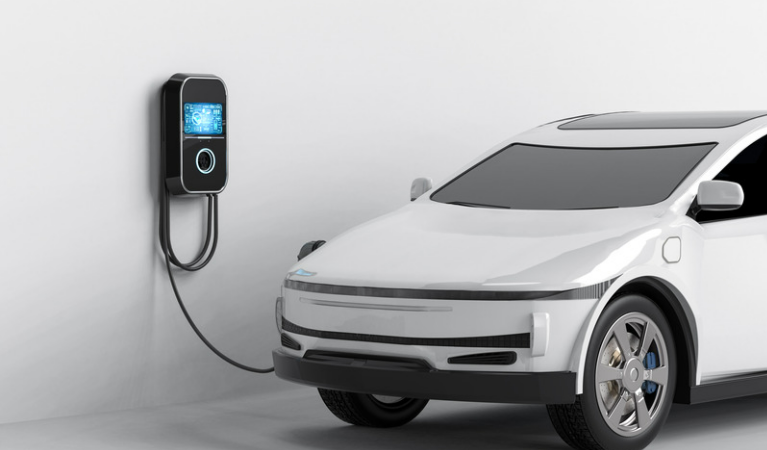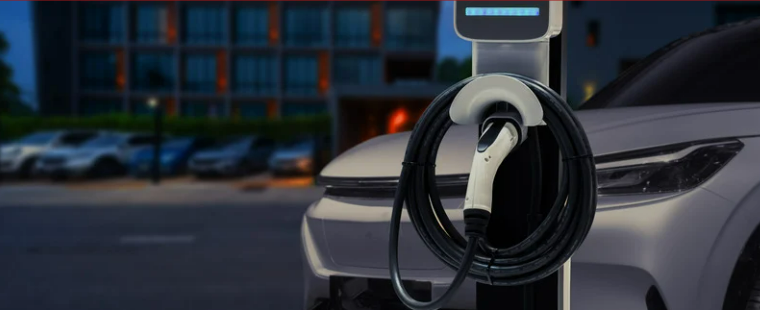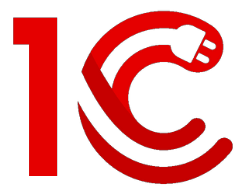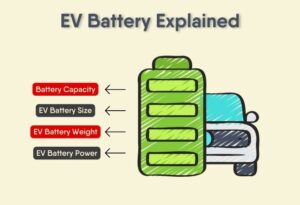Level 1, Level 2 & Level 3 are the types of EV charging based on the speed of charging and the time it takes for charging. EV charging levels vary in the speed of powering up electric vehicle batteries. Higher levels deliver more power for faster charging. Level 1, using a standard 120-volt outlet, is the slowest but simplest method. Level 2, with a 240-volt outlet, can charge a car in 6 to 12 hours. Level 3, or DC fast charging, using a high-voltage outlet, can charge most of the battery in about an hour. Different EVs accept various power levels, with the car determining how much power it receives. Level 3 charging employs different connectors like Combined Charging System, CHAdeMO, and Tesla.
Different levels of EV charging use different EV chargers and connectors. Currently, in India, electric vehicle options are expanding. While the Hyundai Kona remains a long-range choice, new entrants like the Tata Nexon EV, Mahindra XUV400, and Tata Tigor EV are reshaping the landscape. These vehicles offer substantial ranges, such as the Nexon EV with 453 km and the XUV400 with 456 km on a single charge. The Tigor EV presents a range of 315 km. Despite these strides, achieving price parity with internal combustion engine vehicles will take time.
In this article, we will understand the three levels of charging an EV and the time it takes to charge an EV.
Table of content
Level 1 EV Charging
Level 1 electric vehicle charging operates at 120 volts and comes standard with every electric vehicle. Using a cord with an attached control box, users can plug into a common three-pronged (grounded) wall socket. This method typically takes 16 to 20 hours for a full charge, depending on the vehicle’s battery capacity. The advantage lies in its simplicity, requiring no additional hardware installation. Users only need to park near a three-pin wall socket and connect the charging cable. However, the downside is the extended time required to charge the batteries.
Benefits of Level 1 Charging
- Every electric vehicle comes with Level 1 charging equipment as standard.
- Simply plug into a common three-pronged wall socket; no additional hardware installation.
- Convenient charging points using widely available standard wall sockets.
- There is no need for extra charging infrastructure, reducing installation costs.
Drawbacks of Level 1 Charging
- It takes 16 to 20 hours for a full charge, making it a slow charging option.
- Suitable for overnight charging, it is less practical for quick top-ups during the day.
- It is impractical for electric vehicles with larger battery capacities due to the extended time required.
- Charging speed is constrained by standard 120-volt household outlets.
Level 2 EV Charging

Level 2 charging for electric vehicles operates at 240 volts and requires additional hardware. Some manufacturers offer the installation of an AC wall-box charger at the customer’s home or workplace, either for free or at a cost, facilitating level 2 charging. Using this method, an electric vehicle can achieve a full charge in approximately 6 hours, depending on the battery capacity. Level 2 charging is faster than Level 1, and it is also considered more energy-efficient.
Benefits of Level 2 Charging
- Level 2 is quicker than Level 1, reducing electric vehicle charging times.
- Faster charging is convenient for daily use, minimising waiting periods.
- Level 2 is considered more energy-efficient, optimising the charging process.
- Quicker charging extends the driving range within a shorter timeframe.
- Some manufacturers offer home or workplace installation, improving accessibility.
Drawbacks of Level 2 Charging
- Level 2 needs extra hardware, potentially incurring additional costs.
- Widespread use depends on the availability of charging infrastructure.
- While faster, Level 2 still takes a considerable time to charge fully.
- Setting up the charging infrastructure may be challenging in areas with limited EV support.
- Installation costs may impact adoption, considering the expenses associated with Level 2 charging.
Level 3 EV Charging

Level 3 charging for electric vehicles, commonly found at public charging stations, is known as DC fast charging. This technology converts AC current into DC current directly stored in electric vehicle batteries, typically rated at 480 volts. Employing a DC fast charger, an electric vehicle can achieve an 80% charge in less than an hour, with Tesla superchargers achieving the same capacity in just half an hour. However, the hardware for Level 3 charging is costly and is typically available at public charging stations.
Benefits of Level 3 Charging
- Level 3 charging, or DC fast charging, reaches 80% capacity in less than an hour.
- Level 3 chargers are located at public stations, which makes them accessible for electric vehicle users on the move.
- It is Ideal for long-distance travel, as it allows quick top-ups during journeys.
- Tesla’s Level 3 charging achieves high capacity in a short time, benefiting Tesla owners.
Drawbacks of Level 3 Charging
- The hardware for Level 3 charging is expensive, making installations at public stations a significant investment.
- Due to cost and complexity, Level 3 charging is not typically suitable for home installations, limiting accessibility for residential users.
- Users depend on the availability and reliability of public charging stations, which may be limited in some areas.
- Different electric vehicle models may have varying compatibility with Level 3 charging standards, leading to potential challenges for some users.
Conclusion
The three different levels of charging have varied advantages and disadvantages. Level 1 charging type uses a simple three-pin plug connector which is easily available in societies and homes. Therefore, it is good for home charging, but it is a type of slow charging as it takes more than 16 hours to charge an EV. Level 2 charging gives a moderate charging speed, which is quicker than level 1. Level 3 charging requires proper infrastructure, and hence, it is costly. Level 3 charging is found in public stations. It is a DC charging type that takes 45-60 minutes to charge an EV.



